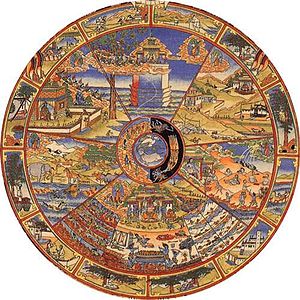Personal Practice of the Ashtanga Primary Series
I practice Ashtanga by myself sometimes. It can be liberating in ways that a studio can’t fulfill. Every time I complete the primary series, I feel so empowered and at peace. I learned the primary series from an instructor in Boston that I forget, but ever since then have felt like I have permission to practice it by myself. Here is what I practice:
Start with the chant to Patanjali:
“vande gurunam caranaravinde sandarsitasvatma sukhava bodhe nih sreyase jangalikayamane samsara halahala mohasantyai abahu purusakaram sankhacakrasi dharinam sahasra sirasam svetam pranamami patanjalim”
Patanjali

Then begin sun salutation A, completing 5 times with 3-5 resting breathes in Adho Mukha Svanasana each time
Samastitihi > raise hands to sun > Uttanasana > Arda-Uttanasana > jumpt to Chataranga > Urdhva Mukha Svanasana > Adho Mukha Svanasana > jump to Uttanasana > Arda-Uttanasana > raise hands to the sun > Samastitihi
Begin Sun Salutation B for 5 reps, this time taking 5 breathes in Adho Mukha Svanasana
Samastitihi > Utkatasana > Uttanasana > Arda-Uttanasana > jump to Chataranga > Urdhva Mukha Svanasana > Adho Mukha Svanasana > Virabhadrasana A (right) > Chataranga > Urdhva Mukha Svanasana > Adho Mukha Svanasana > Virabhadrasana A (left) > Chataranga > Urdhva Muhka Svanasana > Adho Mukha Svanasana > Arda-Uttanasana > Uttanasana > Utkatasana > Samastitihi
Then we begin the standing postures, doing salutations into mountain pose between each posture
Padagustasana (ragdoll) > Pada Hastasana (palms under feet) > Uttitha-Trikonasana (both sides) > Parivrtta-Uttitha-Trikonasana (both sides) > Uttitha-Parsvokonasana (both sides) > Parivrtta-Uttitha-Trikonasana (both sides) > Prasaritta-Padottanasana > Prasaritta Padottanasana B (hands to hips) > Prasaritta-Padottanasana C (hands in fist behind back) > Prasaritta-Padottanasana D (pointer and middle finger to big toe) > Parsvottanasana (both sides) > Uttitha-Hasta-Padagustasana A, B, C (hand to foot in front, rotate to side, remove hand and extend leg forward) (both sides) > Arda Baddha Padmottanasana (both sides) > Utkatasana > Virabhadrasana A (both sides) > Virabhadrasana B (both sides)
After Warrior 2, then we move into seated postures, continuing sun salutation A between each posture

Dandasana > Paschimottanasana A, B (fingers to big toes, bound hands outside feet) > Purvattanasana > Ardha Baddha Padma Paschimottanasana (half bound lotus with hand outside of foot) > Triang Mukhaekapada Paschimottanasana (resting foot behind, hands bound outside feet) > Janu Sirsanana A, B, C (foot inside thigh, foot under thigh, foot facing down below thigh) > Marichyasana A, B, C, D (hands bound behind bent knee, stretched foot into thigh, rebind outside in, bend knee into bound grip) > Navasana > Bujapidasana > Kurmasana > Supta Kurmasana > Garbha Pindasana > Kukkutasana > Baddha Konasana A, B > Upavista Konasana A, B > Supta Konasana > Supta Padagustasana A, Supta Padagustasana > Ubhaya Padagusthasana > Urdhva Mukha Paschimottanasana > Setu Bandhasana > Urdhva Danurasana
By now you should be ready to cool down, this is an enormous amount of postures and the full sequence can take over 2 hours. Finish with:
Salamba Sarvangasana > Halasana > Karnapidasana > Urdhva Padmasana > Pindasana > Mathsyasana > Uttana Padasana > Sirsanana A > Sirsanana B > Yoga Mudra (double bound lotus) > Padmasana > Utpluthih > Savasana
Now you can take a closing chant, which tend to be very powerful:
svasti prajabhyah paripalayantam nyayena margena mahim mahisah go brahmanebhyah subhamastu nityam lokah samastah sukhino bhavantu
And the practice is concluded.
Personal Practice of the Ashtanga Primary Series Read More »



